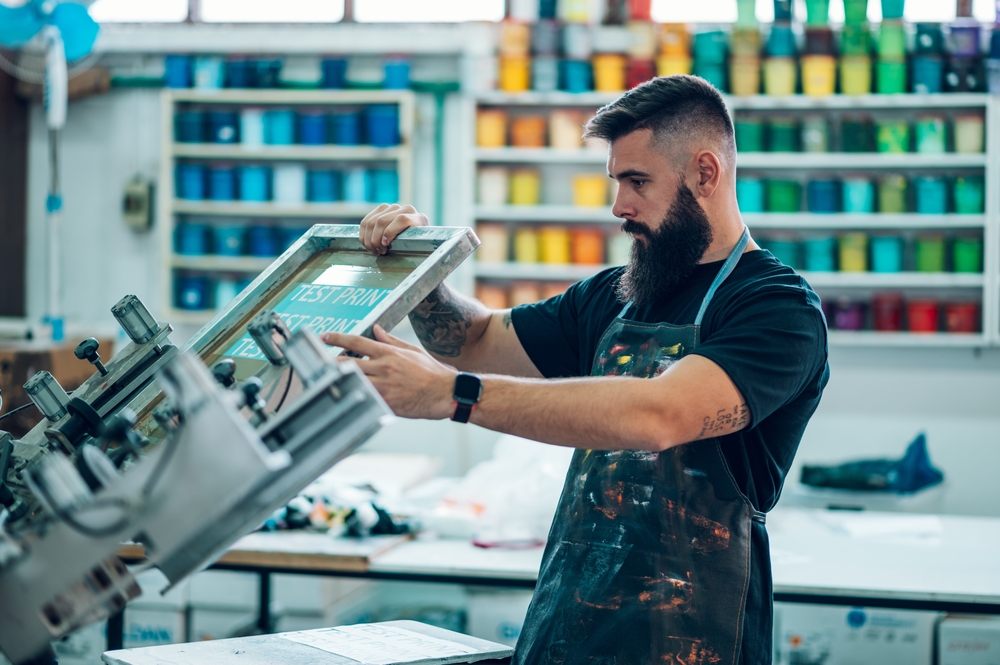The relationship between traditional crafts and modern technology has evolved significantly in recent years, creating new possibilities for artists and hobbyists alike. What were once purely manual processes are now enhanced by computing and advanced tools, enabling greater precision, creativity, and efficiency. From ceramics to woodworking, the fusion of tradition and innovation is shaping a new era of craftsmanship.
Textile Arts and Fashion Design: From Handcrafted to Digitally Printed
Textile arts, one of the oldest forms of craftsmanship, have experienced a digital revolution. Technologies like digital fabric printing have revolutionized how designs are transferred onto textiles. In the past, screen printing involved intricate manual processes that were time-consuming and limited to a few colors. Today, artists can use software to create complex patterns and have them printed directly onto fabric with an unlimited color palette. This method not only saves time but also allows for highly customized and precise designs.
Ceramics and Pottery: 3D Printing Meets the Kiln
In ceramics and pottery, traditional methods like hand-throwing or sculpting are now complemented by 3D ceramic printing. Artists can design intricate forms using digital modelling software and print them using clay-based 3D printers, drastically reducing the time and effort involved in manual crafting. This technology enables designs that would be nearly impossible to achieve by hand, such as intricate lattice structures or seamless geometric forms.
Jewelry Making: Precision in Every Detail
Jewelry design has long relied on the hands of skilled artisans to craft intricate pieces. However, with the introduction of laser engraving, cutting, and Computer-Aided Design (CAD) software, jewelry makers now have tools to create even more precise and complex designs. CAD software allows designers to visualize their creations in three dimensions, modify them with ease, and produce prototypes using 3D printing before committing to final production. This approach speeds up the design process and allows for highly detailed customization.
Leatherworking: From Hand Tools to Laser Cutters
Leatherworking, a craft traditionally reliant on hand tools, has seen a transformation with the introduction of laser cutting and CNC (Computer Numerical Control) machines. Leatherworkers can now design detailed patterns on a computer and have them laser-cut with incredible precision. This eliminates the need for time-consuming manual cutting and allows for intricate designs that would be nearly impossible by hand. Similarly, CNC machines can emboss patterns onto leather, ensuring uniformity across multiple pieces, streamlining the process while retaining craftsmanship.
Calligraphy and Typography: Digital Artistry in Handwriting
Calligraphy, once a painstakingly manual art, has been brought into the digital age through graphic tablets and digital calligraphy tools. Artists can now use digital pens to replicate the delicate strokes of traditional calligraphy while working in design software, blending the elegance of handwriting with the convenience of modern computing. Typography, too, has benefited from this shift, with font design software allowing typographers to turn hand-drawn letters into scalable, digital typefaces that can be shared and used globally.
Woodworking: Precision with CNC and CAD
Woodworking, another ancient craft, has embraced modern technology with CNC routers and laser engraving machines. Woodworkers can now use CAD software to design detailed blueprints or 3D models, and CNC machines can then cut and carve wood with unmatched accuracy. Whether machines producing boards of MDF cut to size or intricate laser-cut patterns, these tools allow for the creation of complex furniture pieces or intricate engravings, giving craftsmen more time to focus on the creative aspects of their work rather than labor-intensive cutting and shaping.
Baking and Pastry Arts: 3D Printed Cakes?
Even in the culinary world, technology is making an impact. Bakers and pastry chefs are using food-safe 3D printers to create intricate edible designs with chocolate, fondant, and other materials. This allows for precision and creativity in decorating that would be difficult to achieve by hand. Digital food coloring machines are also being used to print detailed patterns and images onto cakes and pastries, enabling a level of customization and artistry that brings baking into the realm of high-tech craftsmanship.
Conclusion: A New Age of Creative Potential
The fusion of traditional crafts with modern technology is not just about efficiency—it’s about expanding the creative potential of artists and hobbyists. By incorporating digital tools, artisans can explore new forms of expression, experiment with complex designs, and push the boundaries of what is possible in their craft. This means that creativity is amplified, not replaced, by technology. As we look ahead, the possibilities are endless for those willing to embrace both the old and the new in their artistic pursuits.
Keep an eye for more latest news & updates on Internal Insider!










